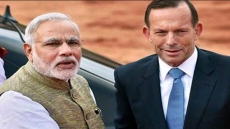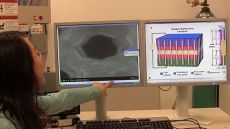MOUNTAIN VIEW, Calif. — Hustling to bring cars that drive themselves to a road near you, Google finds itself somewhere that has frustrated many before: Waiting on the Department of Motor Vehicles.
The tech titan wants the freedom to give the public access to self-driving prototypes it has been testing on public roads since the summer. Before granting that permission, California regulators want Google to prove these cars of the future already drive as safely as people.
The Department of Motor Vehicles was supposed to write precedent-setting rules of the road by last Jan. 1. Nearly a year later, it is still struggling. After all, the agency is geared to administering driving tests and registering cars, not settling complicated questions the technology raises.
If the cars' advanced sensors and computing power can drive better than humans, do they need a steering wheel and pedals? Would a person even need to be inside? Google says no on both.
Regulators don't want to be blamed for unnecessarily stalling the arrival of robo-chauffeurs that can see farther, react faster and don't text, speed or fall asleep. They've implored Google and traditional automakers also developing the technology to share safety data, but companies in competition don't willingly reveal trade secrets.
Delay is not what Google had in mind when it pushed the 2012 legislation that made California one of the few states officially to authorize self-driving cars. Google's hope was to trade the independence to innovate without government oversight for regulatory certainty.
Three years later, both a company that abhors bureaucracy and a DMV struggling to write rules beyond its expertise are exasperated.
While self-driving cars are not close to being widely available, Google hinted in 2014 it wanted to get self-driving cars into public hands as early as 2016, probably starting with employees outside its small corps of self-driving car experts.
More recently, the project's leader, Chris Urmson, has said he doesn't want his eldest son to need a driver's license when he turns 16 in 3-1/2 years.

The bubble-shaped, two-seater prototype can't go anywhere, any time. It is limited to places Google has surveyed in far greater detail than its online maps. It can't handle fog or snow. Top speed: 25 mph.
Google's 73 cars are among the 98 test vehicles that California's DMV has given 10 companies permission to test publicly.
Though trained test drivers must sit behind the wheel, Google wants to remove the wheel and pedals for the general public. Its argument: It would be safer to take all control away than expect a person to snap safely to attention in an emergency.
As a famously data-driven company, Google proposes a composite sketch of evidence would show its cars are safe.
Each day, Google runs more than 3 million miles of computerized driving simulations. Engineers devise challenging real-world situations, then see how the cars respond. A "functional safety analysis" assesses what hardware or software might fail and how to minimize those risks.
Public road testing is the last piece. Google reports its cars have been involved in 17 collisions over 2.2 million miles of testing, nearly 1.3 million miles in self-driving mode. While that accident rate appears to be higher than for human drivers (though Google disputes that), accident summaries Google has published say its cars did not cause any accident.
Google has pressed California's DMV to publish regulations far harder than any other company.
"Our team is concerned about the delay," according to an invitation for a conference call last December that Google sent California officials, who released it under a public records act request.
Both before and after, Google representatives consistently checked with officials at the DMV and California State Transportation Agency about the status of rules. State officials have trooped from Sacramento to Silicon Valley for test rides, while Google's technical experts and lobbyists have headed to the capital for briefings or talks about regulation writing.

"The worst thing would be for California, sort of the birth state of this technology, to accidentally sort of shut things down," Sarah Hunter, public policy director at the experimental lab Google spun off to focus on ambitious projects such as self-driving cars and Internet-beaming balloons, said at a public presentation in September.
Shortly before, she jokingly jabbed a co-panelist who is the top DMV self-driving car official. Asked when self-driving technology would be "mainstream," Hunter responded: "Whenever the DMV pass their operational regulations."
There's frustration to go around.
At the DMV, officials have pleaded for input from Google and traditional automakers to help set a clear, objective safety standard. At a meeting in May in Washington, traditional automakers joined Google in voicing concern that regulation — particularly in California — could stifle innovation.
There are no federal regulations on self-driving cars.
Still, California officials are "taking cues" from the National Highway Traffic Safety Administration, said the state's secretary of transportation, Brian Kelly. NHTSA's official position holds that any state which authorizes self-driving cars should require a licensed driver who can take control.
"My sense of it is we're getting a go-slow message from the federal government," Kelly said. He said that made sense for safety, but as a state famous for innovation, "we want to work through some of those sticky issues." He hopes the DMV will publish draft rules for public input by year's end.
In interviews, NHTSA Administrator Mark Rosekind and his boss, U.S. Transportation Secretary Anthony Foxx, said the federal government's message to California was "go safe." Intriguing as the technology's life-saving potential may be, California should not hastily write new regulations, despite "pressure" to do so, Rosekind wrote DMV Director Jean Shiomoto in April.

Over the summer, Google expanded its road testing from Silicon Valley to Texas, where state law would not prohibit cars without pedals and a wheel. Some within California's DMV wondered whether Google's move was motivated by frustration with its home state.






